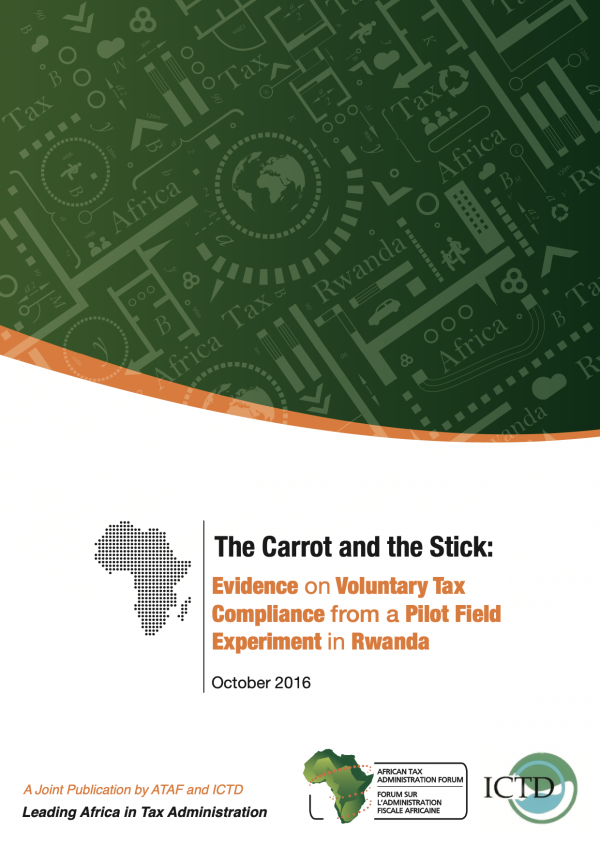
The Carrot and the Stick: Evidence on Voluntary Tax Compliance from a Pilot Field Experiment in Rwanda
The literature on tax compliance has recently seen a surge of evidence from field experiments. Field experiments use administrative data from taxpayers’ records to evaluate the effectiveness of communication strategies that revenue administrations can adopt to increase compliance. These strategies typically take the form of letters delivered to taxpayers, which aim to provide information on the tax system or to change perceptions on key determinants of tax compliance, such as deterrence or fiscal exchange. Revenue authorities play a key role in this type of study, both in providing data from anonymised taxpayer records and in implementing the intervention. From a theoretical standpoint, most studies of tax compliance are based on the seminal model of Allingham and Sandmo (1972) and its subsequent developments.1 Generally, tax compliance behaviour is determined by a mix of enforcement measures, such as audits and the effective use of third-party data, and quasi-voluntary compliance, which is motivated by factors often labelled as ‘tax morale’,2 such as trust in institutions, social norms, fiscal exchange, and moral factors. One could think about deterrence measures as the ‘stick’, while measures to encourage voluntary compliance would be the ‘carrot’. In practice, these theoretical elements interact in complex ways with individual characteristics (e.g. sector, employment status, gender) and with practical aspects of the taxpaying environment (e.g. corruption of tax collectors, accessibility of information, availability and quality of tax advisers). Field experiments test empirically which factors affect tax compliance in practice (for a detailed review, see Mascagni 2016).